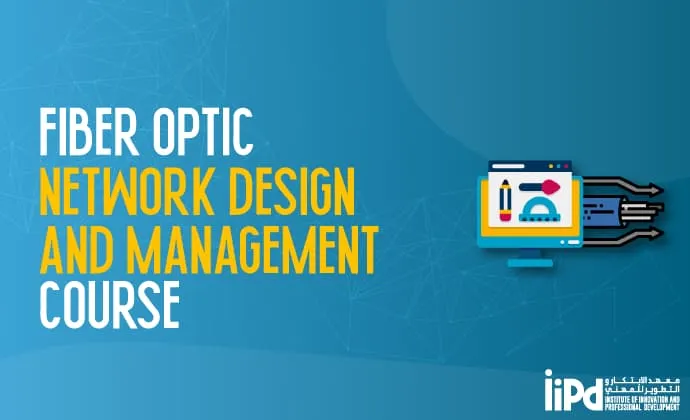
Course Details
This course covers step by step the fiber optic networks design and architectures, teaches the trainees how to design the networks with standards compliant, choose the correct components, manage the installation, set up test plan, and study deeply the applications of fiber optic in many applications using the latest technologies
Target Audience:
This course is designed for Designers, Network, Telecom engineers, Presales, project managers, contractors, and consultants
Objectives:
Upon completing this course, the learner will be able to meet these overall objectives:
- Knowledge of fiber optic fundamentals
- Knowledge of network topologies and how to choose the optimal one for any application
- Understanding the International standards TIA & ISO
- Study the fiber optic specifications
- Study the deeply the specifications of the fiber optic cables
- Choose the proper and cost-effective components
- Choosing the active components
- Preparing Fiber Optic Plant Documentation
- Preparing Plant Link Loss Budget Analysis and Calculation
- Determine the bandwidth and bit rate
- Study the most advanced installation techniques
- Study the huge traffic transmission systems
- Study true examples and case studies in many sectors
- Study the fiber-to-the-home design and applications
Prerequisites:
- Fiber Optic Technician Course
Course Contents:
The course contents are thoughtfully curated to provide a comprehensive understanding of the subject. Beginning with foundational concepts, the curriculum progresses into specialized topics through engaging lectures, discussions, and practical exercises. This balanced approach between theory and application equips students with valuable skills for real-world success.
Fiber Optic Fundamentals
- Overview
- Advantages of Fiber Optics
- Fiber Optic vs. Copper
- Parameters explaining
- Fiber Optic Transmission Basics
Fiber Optic Types & Standards
- Single Mode
- Multi Mode
- Plastic Fiber Optic
Fiber Optic Losses and Transmission Effects
- Insertion and Reflection Loss
- Splice Loss and Termination Loss
- dB & dBm
- Bending, Temperature, Humidity, and Pressure
Fiber Optic Design Overview
- Introduction to the Fiber Optic Design
- Who can design the fiber optic networks?
- Design Process
Fiber Optic Networks Topologies, Examples, and Applications
- Meaning of Topology
- Star Topology
- Ring Topology
- Bus Topology
- Mesh Topology
- Tree Topology
Fiber Optic International Standard
- TIA
- ISO
Fiber Optic Cable Specifications Studying
- Environmental Specifications
- Mechanical Specifications
- Optical Specifications
How to Choose the Components?
- Choosing Fiber Types
- Indoor cables (riser & Plenum)
- Outdoor cable (Armored & Heavy Duty)
- Hardware and Accessories
- Choosing Installation Techniques
- Choosing Civil Materials, Manholes, and Conduits
- NEC and IEC standards
Advanced Fiber Optic Cable Installation Techniques
- Cable blowing (air jetting)
- Cable Floating
- Modern Submarine Cabling
- HDD
- Micro Trenching
- Micro Ducting
- Mid-Span
Plant Link Loss Budget Analysis and Calculation
- Loss Types
- Total Loss Equation
- Loss Safe Factor
Transmission Equipment Power Budget Calculation
- Transmitter Power
- Receiver Sensitivity
- Power Budget Calculation
Fiber Optic Active Components
- Fiber / Ethernet converters
- Fiber / Coaxial converters
- Fiber / serial converters
- SM / MM converters
- Industrial Switches
- Cisco SFP selection guide
MM Fiber Bite Rate Calculation
- MM OM1, OM2, OM3 and OM4 Bandwidth
- MM Fiber and Bit Rate Calculation
Introduction to Optical Multiplexing
- Introduction to Multiplexing
- FDM and TDM
- WDM
- CWDM
- DWDM
- OADM
Fiber Optic Project
- Site Survey
- Right of the Way
- Project Costing
- Network Planning
- Network Installation
- Dark Fiber
Fiber Optic Plant Documentations
- Network Drawing
- Preparing Bill of Quantities
- Installation Time Schedule
- Testing Sheets format
- Labeling
- As built and Plant Handover
General Fiber Optic Applications and Case Studies
- Power Application- SCADA system
- Oil Application - Oil pipeline
- Telecom Application - DWDM
- Military Application - Radar
- IT Application - 10G WAN
- Security Application - CCTV
- Media Application - SAN
FTTX (Fiber To The X)
- What is the FTTX?
- FTTX vs. Traditional Systems
- FTTO, FTTB, FTTN & FTTH
- Fiber Splitters
- Splitter Loss
- FTTH Design Guide
Network Management
- Project management
- Operation support
- Network Analytics
- Managing troubleshooting
- Review and Quiz
By enrolling in this course at IIPD Global, participants will gain the expertise needed to navigate the complexities of fiber optic networks and effectively manage their design and implementation. Whether you are a seasoned professional aiming to enhance your skills or an aspiring specialist seeking to enter this thriving field, this course is designed to cater to diverse learning needs. Don't miss out on this chance to elevate your career prospects and contribute to the ever-evolving world of telecommunications. Enroll now at IIPD Global and embark on a journey toward excellence in fiber optic network design and management. Your future in this dynamic industry awaits.








